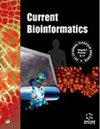基于融合相似性信息的深度矩阵分解法预测 miRNA 与疾病的关联性
IF 2.9
3区 生物学
Q3 BIOCHEMICAL RESEARCH METHODS
引用次数: 0
摘要
目的:微RNA(miRNA)是多种生物过程的关键调控因子,与人类疾病密切相关。本研究旨在提出一种预测 miRNA 与疾病关联的计算模型 SIDMF。背景:事实证明,利用功能相似性和基于网络的推断,计算方法能有效预测 miRNA 与疾病的关联。机器学习技术,包括支持向量机、半监督算法和深度学习模型,在这一领域已占据重要地位。目标:开发一种在深度矩阵因式分解框架内整合疾病语义相似性和 miRNA 功能相似性的计算模型,以准确预测 miRNA 与疾病之间的潜在关联。研究方法本研究提出的 SIDMF 在深度矩阵因式分解框架内整合了疾病语义相似性和 miRNA 功能相似性。通过重建 miRNA 与疾病的关联矩阵,SIDMF 预测了 miRNA 与疾病之间的潜在关联。结果:采用全局留空交叉验证(LOOCV)和局部留空交叉验证对 SIDMF 的性能进行了评估,结果显示 SIDMF 的曲线下面积(AUC)分别达到了 0.9536 和 0.9404 的高值。与其他方法的比较分析表明,SIDMF 的性能更优越。对乳腺癌、食管癌和前列腺癌的病例研究进一步验证了 SIDMF 的预测准确性,在预测的前 50 个 miRNA 中,有相当大的比例在相关数据库中得到了证实。结论SIDMF 是预测 miRNA 与疾病之间潜在关联的一种有前途的计算模型。它在全局和局部评估中的强劲表现,以及成功的案例研究,凸显了它对疾病预防、诊断和治疗的潜在贡献。本文章由计算机程序翻译,如有差异,请以英文原文为准。
Prediction of miRNA-disease Associations by Deep Matrix Decomposition Method based on Fused Similarity Information
Aim: MicroRNAs (miRNAs), pivotal regulators in various biological processes, are closely linked to human diseases. This study aims to propose a computational model, SIDMF, for predicting miRNA-disease associations. Background: Computational methods have proven efficient in predicting miRNA-disease associations, leveraging functional similarity and network-based inference. Machine learning techniques, including support vector machines, semi-supervised algorithms, and deep learning models, have gained prominence in this domain. Objective: Develop a computational model that integrates disease semantic similarity and miRNA functional similarity within a deep matrix factorization framework to predict potential associations between miRNAs and diseases accurately. Methods: SIDMF, introduced in this study, integrates disease semantic similarity and miRNA functional similarity within a deep matrix factorization framework. Through the reconstruction of the miRNA-disease association matrix, SIDMF predicts potential associations between miRNAs and diseases. Results: The performance of SIDMF was evaluated using global Leave-One-Out Cross-Validation (LOOCV) and local LOOCV, achieving high Area Under the Curve (AUC) values of 0.9536 and 0.9404, respectively. Comparative analysis against other methods demonstrated the superior performance of SIDMF. Case studies on breast cancer, esophageal cancer, and prostate cancer further validated SIDMF's predictive accuracy, with a substantial percentage of the top 50 predicted miRNAs confirmed in relevant databases. Conclusion: SIDMF emerges as a promising computational model for predicting potential associations between miRNAs and diseases. Its robust performance in global and local evaluations, along with successful case studies, underscores its potential contributions to disease prevention, diagnosis, and treatment.
求助全文
通过发布文献求助,成功后即可免费获取论文全文。
去求助
来源期刊

Current Bioinformatics
生物-生化研究方法
CiteScore
6.60
自引率
2.50%
发文量
77
审稿时长
>12 weeks
期刊介绍:
Current Bioinformatics aims to publish all the latest and outstanding developments in bioinformatics. Each issue contains a series of timely, in-depth/mini-reviews, research papers and guest edited thematic issues written by leaders in the field, covering a wide range of the integration of biology with computer and information science.
The journal focuses on advances in computational molecular/structural biology, encompassing areas such as computing in biomedicine and genomics, computational proteomics and systems biology, and metabolic pathway engineering. Developments in these fields have direct implications on key issues related to health care, medicine, genetic disorders, development of agricultural products, renewable energy, environmental protection, etc.
 求助内容:
求助内容: 应助结果提醒方式:
应助结果提醒方式:


